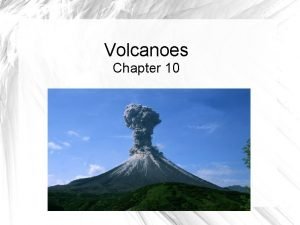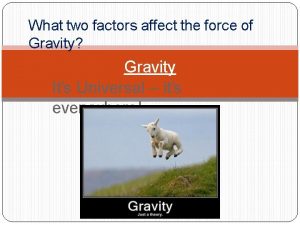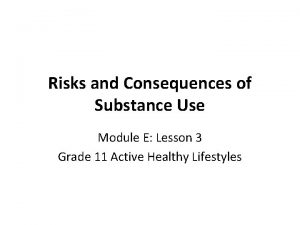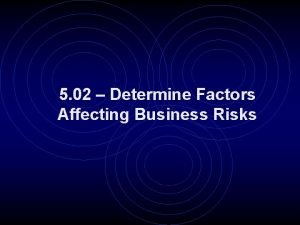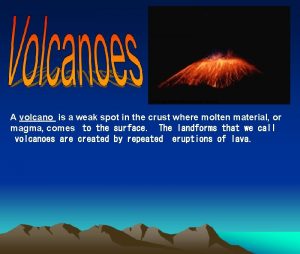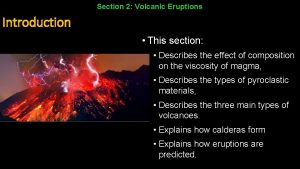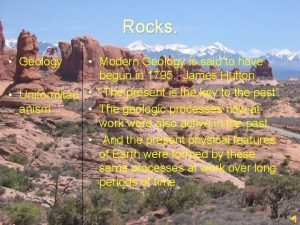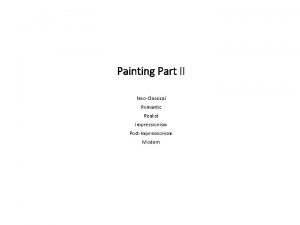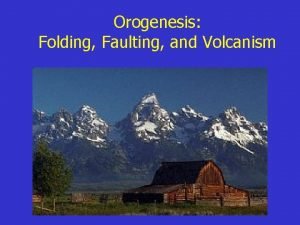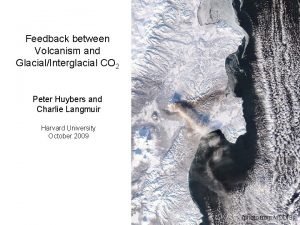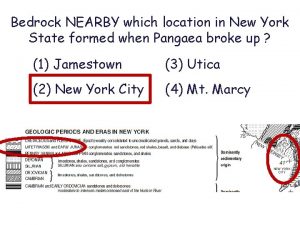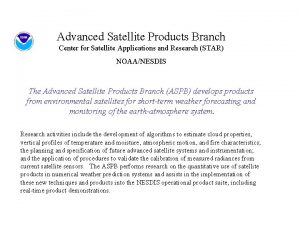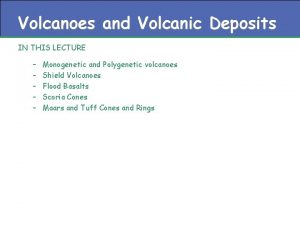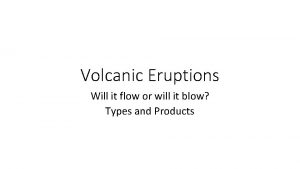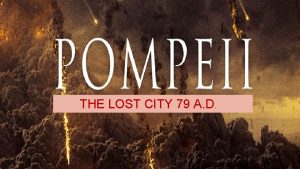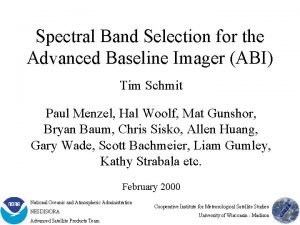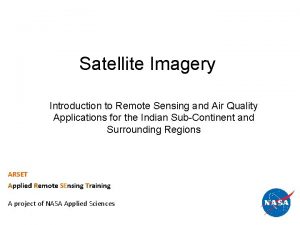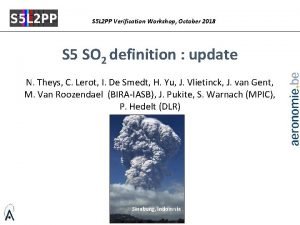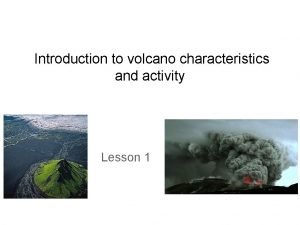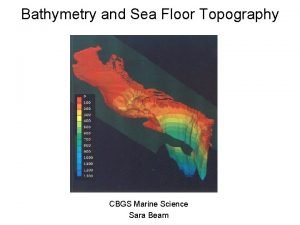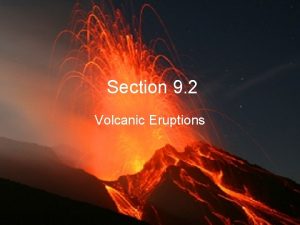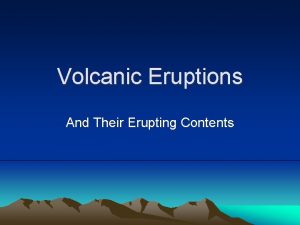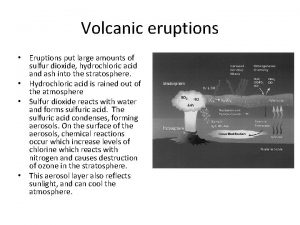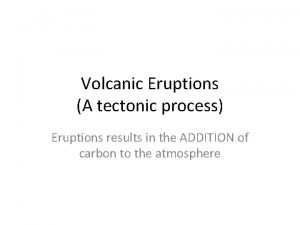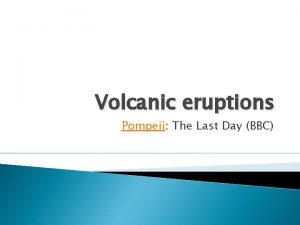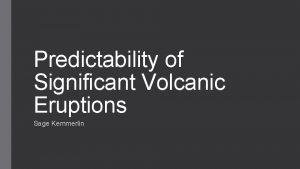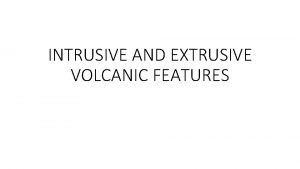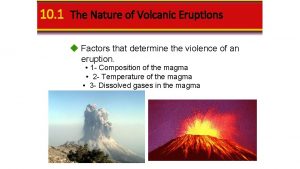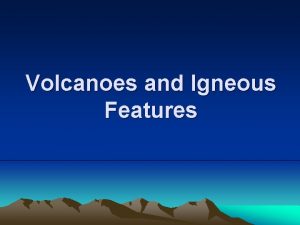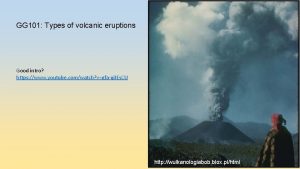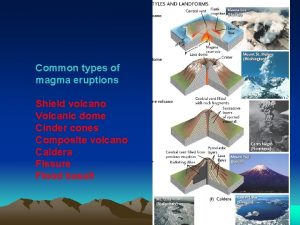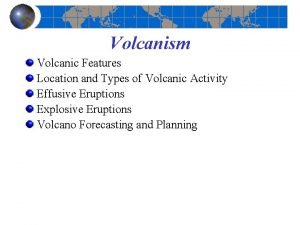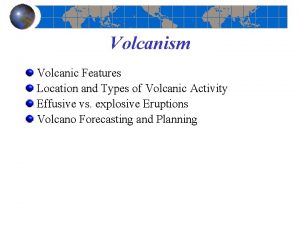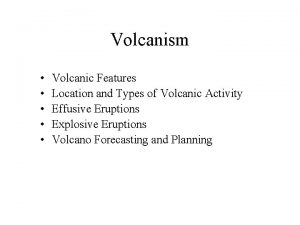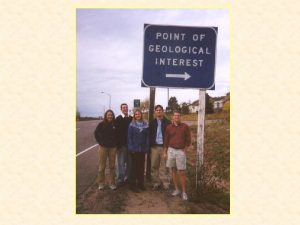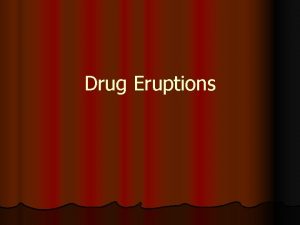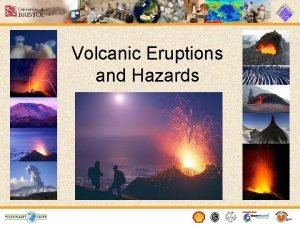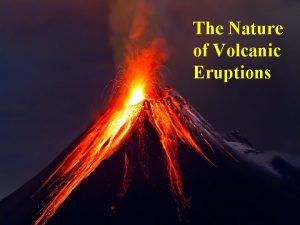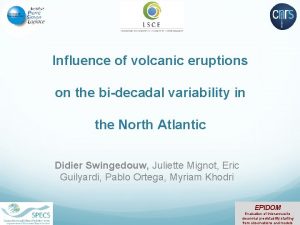Types of Volcanic Eruptions Two factors determine the

























- Slides: 25

Types of Volcanic Eruptions Two factors determine the type of eruption: § § Amount of water vapor & other gases in the magma The chemical composition of the magma

Volcanoes SPI 5. 2. 5 Describe internal forces such as volcanoes, earthquakes, faulting, and plate movements that are responsible for the earth’s major geological features such as mountains, valleys, etc.

Explosive Eruptions • • • Rarer but very destructive Clouds of hot debris, ash, and gas rapidly shoot out. Molten rock pieces and ash can be blown into the air

Explosive Eruptions • Water content of the magma is high

Explosive Eruptions Silica content of the magma is high- • • • it’s thick, flows slow, and tends to plug vents Enough pressure= explosion!

Examples: • Mt. St. Helens • Mt. Fuji • Mt. Pinatubo

Non-explosive Eruptions § § Most common Produce relatively calm flows of lava

Non-explosive § Lower silica content (thinner lava)

Non-explosive § § …and has low water content Examples: Hawaii

Video: a typical Hawaiian eruption

Shield volcanoes • Huge! Made from lava layers • Large base, gentle slope • Form non-explosive eruptionsrunny lava spreads over a large area • Life span of a million years or more • Example: Hawaii’s Mauna Kea

Sketch a shield Volcano:

Shield Volcanoes Mauna Kea

Shield Volcanoes Mauna Kea

Shield volcano on Mars; Taken from space The Mauna Loa volcano in Hawaii— the largest volcano on Earth—has the broad expanse characteristic of shield volcanoes. It spreads across half the island of Hawaii.

Cinder cones • Made of loose pyroclastic material from moderately explosive eruptions • When lava hits the ground, it sticks rather than flows • This builds a steep cone with a small base • Life span of a few years because they erode away easily • Example: Mexico’s Paricutín

Cinder cones Sketch:

Cinder Cones:


Composite or strato • One of the most common kinds • Form from explosive pyroclastic material followed by quieter flows of lava- creates alternating layers • Broad bases, sides that get steeper towards the top • Life span of a million years or more

STrato/Composite Example: Mt. Fuji in Japan

Sketch a composite Volcano:

More Composite (strato) Volcanoes : Mt. Rainier

Composite/strato volcanoes

Video Clip: Types of volcanoes
 Types of volcanoes
Types of volcanoes Factors affecting volcanic eruption
Factors affecting volcanic eruption What 2 factors affect the force of gravity
What 2 factors affect the force of gravity Factors that determine wages
Factors that determine wages Factors that determine your personality module e
Factors that determine your personality module e Determine factors affecting business risk.
Determine factors affecting business risk. Primary volcanic hazards
Primary volcanic hazards How much is 100 grams
How much is 100 grams Volcanic ash
Volcanic ash Volcanic ash
Volcanic ash Volcanic and plutonic rocks difference
Volcanic and plutonic rocks difference Volcanic ash
Volcanic ash Folding faulting and volcanic activity
Folding faulting and volcanic activity Volcanic features
Volcanic features Thin layers of volcanic ash act as excellent time markers
Thin layers of volcanic ash act as excellent time markers Volcanic ash
Volcanic ash Volcanic ash
Volcanic ash Volcanic ash
Volcanic ash Volcanic ash
Volcanic ash Volcanic ash
Volcanic ash Volcanic ash
Volcanic ash Volcanic ash
Volcanic ash Tephra in volcano
Tephra in volcano Lava erupts through an opening in earth’s crust called a
Lava erupts through an opening in earth’s crust called a Volcanic island arc map
Volcanic island arc map Volcanic island arc
Volcanic island arc

